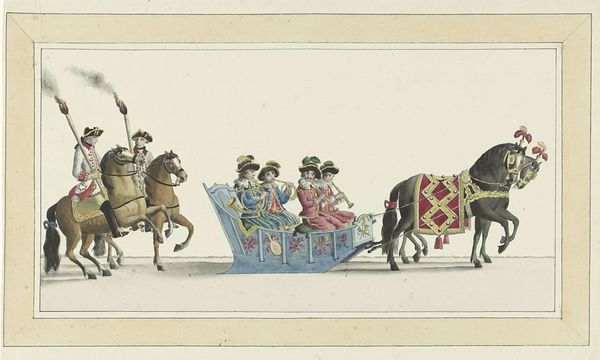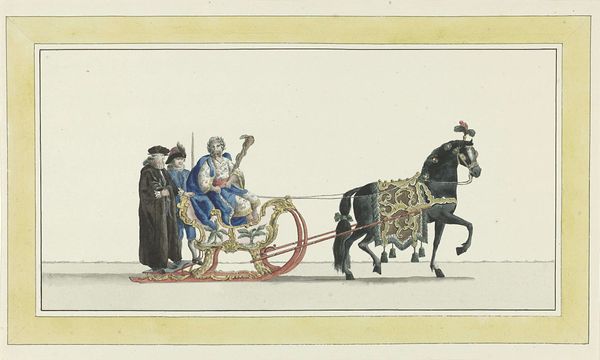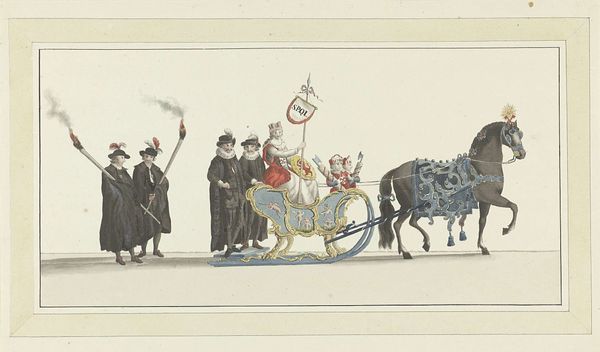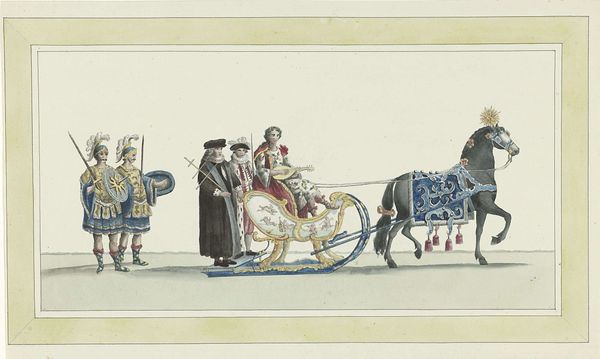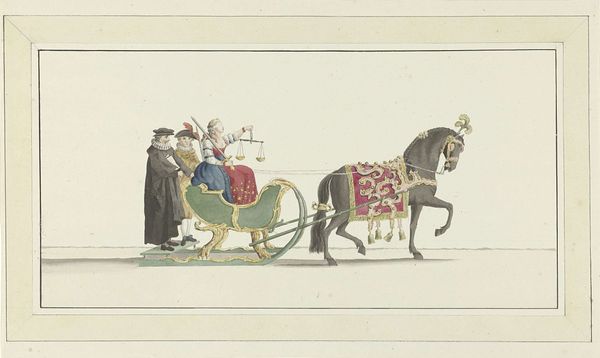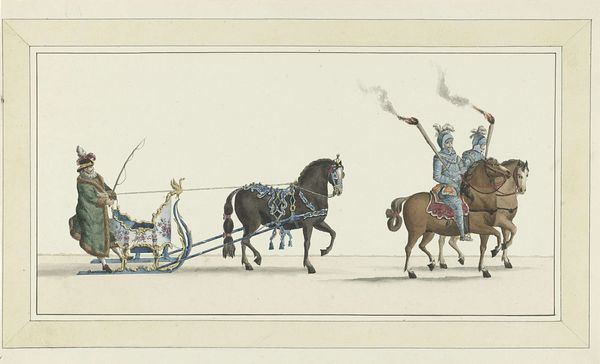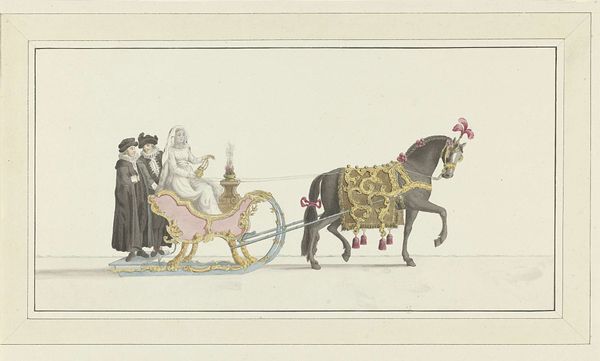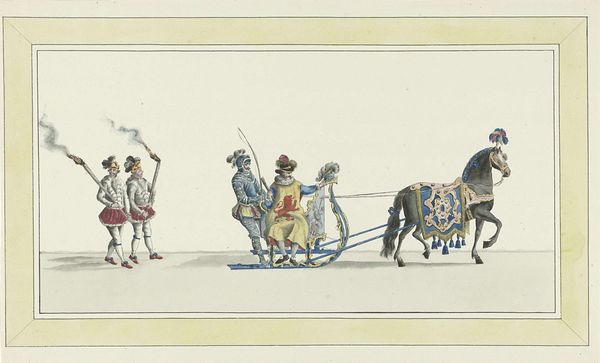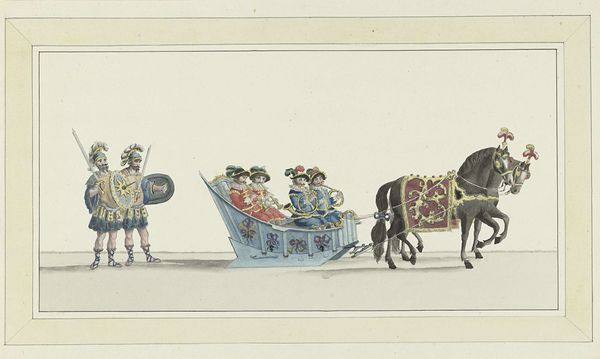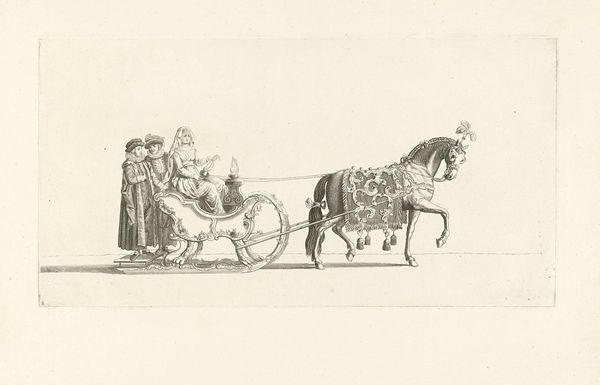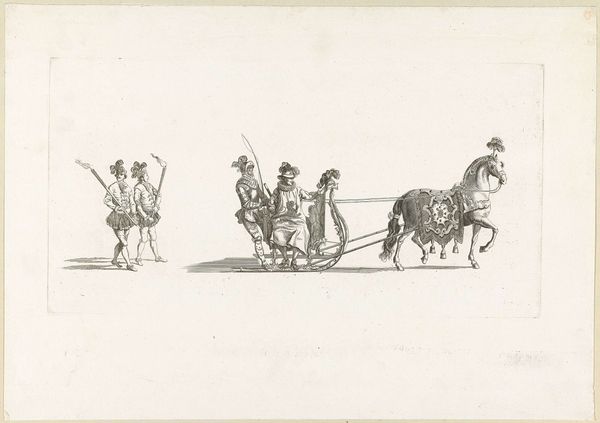
Dimensions: height 313 mm, width 518 mm
Copyright: Rijks Museum: Open Domain
Editor: Here we have Abraham Delfos's "Zevende slede" from 1776, a drawing done with pencil, ink and engraving on paper. The depiction of the horse and carriage gives such an airy feel... like it is floating almost? What grabs your attention about this piece? Curator: Floating...yes, I can almost feel the crisp air, hear the jingle of the harness! To me, it's the theatricality. Look at the detail in the costumes, the elaborate decorations on the sleigh, the pageantry of it all. It's almost as if Delfos has captured a fleeting moment from a royal parade. Do you get a sense of narrative from it, or is it more of a snapshot in time? Editor: Snapshot is the first word that came to mind but, now that you say that, I'm almost feeling a before-and-after vibe... almost a dramatic plot about to happen? Curator: Exactly! The banner on the right. Can you make out the letters? To me, it reads almost as if Delfos added little narrative cues so the viewer could complete the full story. Consider the context of the time, too—the Enlightenment ideals spreading throughout Europe, even while aristocratic excess continued. This could be a commentary on that divide, couldn’t it? Editor: That's a point of view I wouldn't have imagined at first. It adds depth and makes the artwork resonate with societal contexts far broader than just "snapshot." Curator: Art is that little boat we must keep paddling to open doors that lead to endless perspectives. It’s a mirror to society and to ourselves, reflecting and refracting. Editor: I love that. I’m going to hold that boat analogy for future essays.
Comments
No comments
Be the first to comment and join the conversation on the ultimate creative platform.

